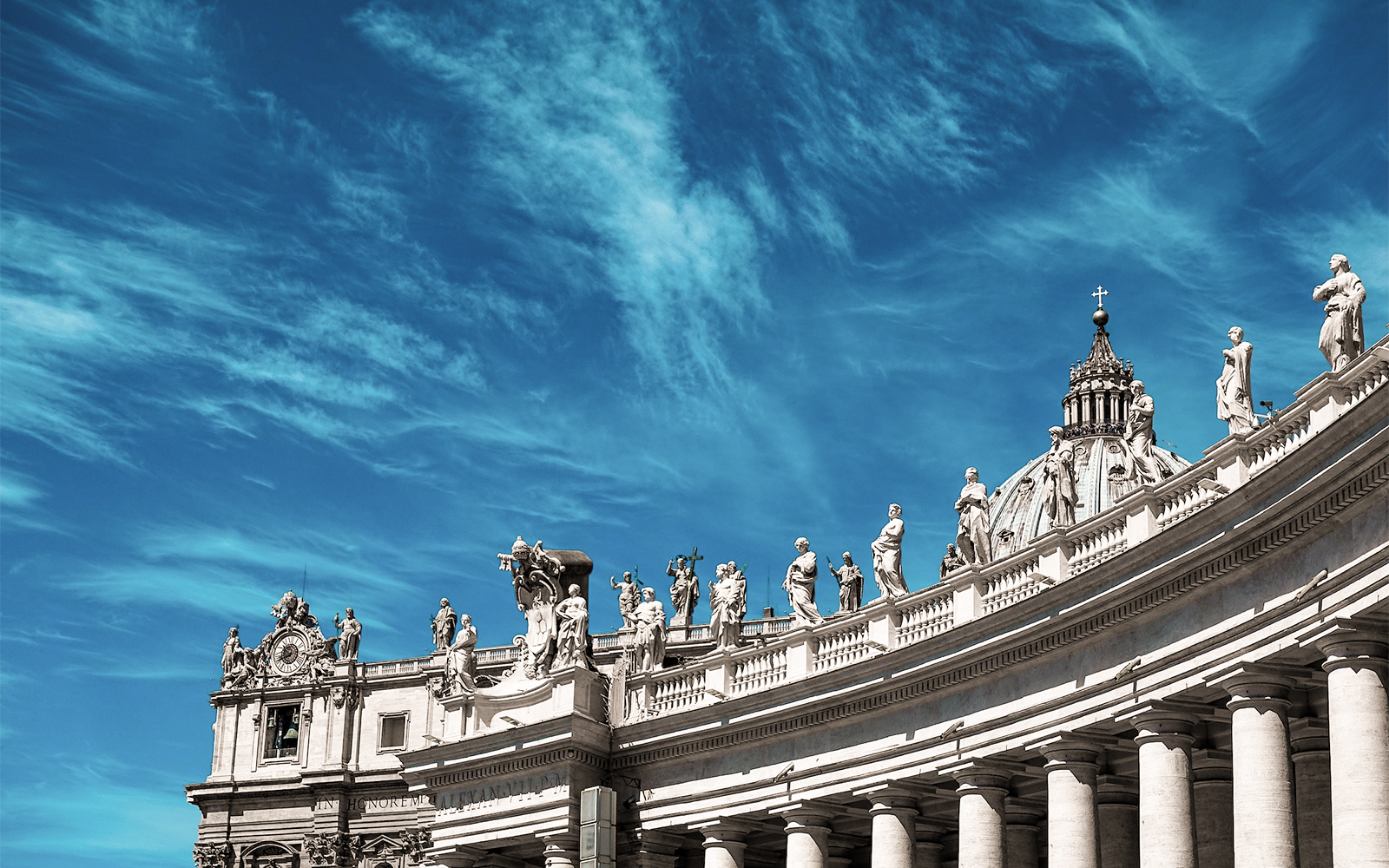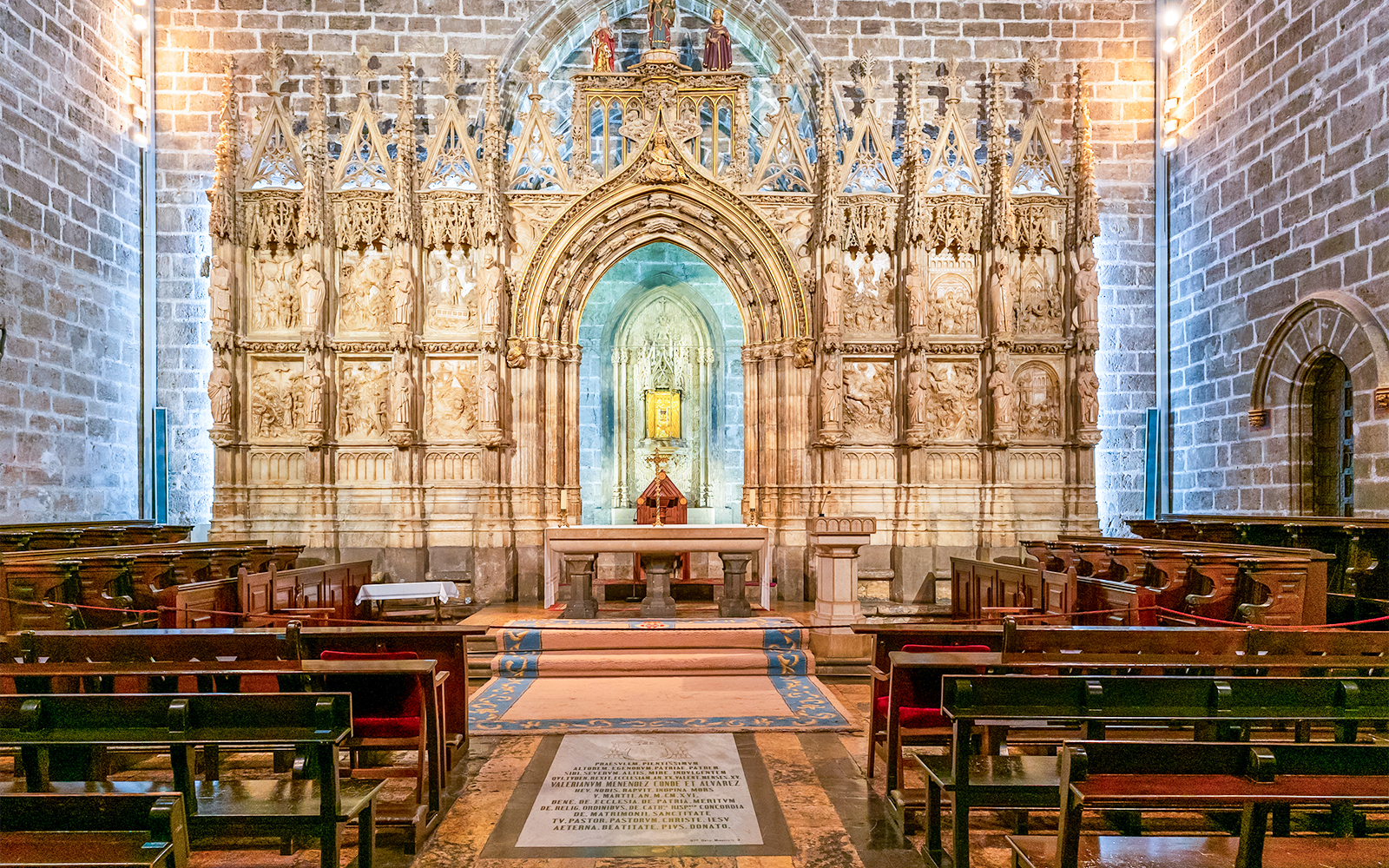Vatican City, the world's smallest independent state, nestled within the heart of Rome, holds an unparalleled allure. As the spiritual and administrative center of the Roman Catholic Church, this sacred enclave has been a symbol of faith, power, and secrecy for over a thousand years. While millions of pilgrims and tourists visit the Vatican each year, only a select few are aware of the secrets veiled behind its walls.
Beneath the surface of this iconic city-state lies a treasure trove of untold stories waiting to astonish you. Are you ready to delve into the enigmatic heart of the Holy See? Let the revelation begin!
Recommended tickets to the Vatican
1. The Secret Archives

Home to historical records dating back centuries, the Vatican Secret Archives hold documents that remain strictly off-limits to the public eye, leaving room for speculations on what historical truths they may contain.
2. The Borgia Apartments

Hidden within the Vatican Palace, these opulent apartments are adorned with stunning frescoes and are said to have hidden passageways used by the infamous Borgia family.
3. The Unpublished Michelangelo Works

Michelangelo, the renowned Renaissance artist, secretly created several unfinished and unpublished works that are concealed within the Vatican's vast art collection.
4. The Catacombs of Saint Callixtus

Deep beneath the Vatican lies a network of catacombs that served as burial grounds for early Christians, preserving priceless relics and ancient frescoes.
5. The Passetto di Borgo

A narrow, fortified corridor connects the Vatican to Castel Sant'Angelo, providing a secret escape route for popes during times of danger.
6. The Pinecone Courtyard

Concealed within the Vatican Museums, this serene courtyard houses ancient artifacts, including the celebrated colossal bronze pinecone statue.
7. The Secret Confessionals

Legends speak of hidden chambers where popes confessed their sins anonymously to ensure the sanctity of their position.
8. The Vatican's Independent Time Zone

Vatican City operates on its time zone, ensuring that the timing of important events aligns with the Holy See's schedule.
9. The Vanishing Obelisks

Some obelisks within Vatican City seem to vanish when viewed from certain angles, an architectural marvel yet to be fully explained.
10. The Illuminati Influence

Conspiracy theorists believe that the Vatican's architecture and art contain hidden symbols and signs of the mysterious Illuminati.
11. The Templar Treasure

Legends persist of a hidden treasure connected to the Knights Templar, said to be concealed within Vatican City's walls.
12. The Secret Tunnel to Castel Gandolfo

Vatican City is rumored to be connected to the Pope's summer residence, Castel Gandolfo, by a clandestine underground tunnel.
13. The Disappearance of Pope John VIII

The fate of Pope John VIII remains an enigma, with some historians speculating that he was a woman who disappeared under mysterious circumstances.
14. The Pagan Roots

Beneath the imposing St. Peter's Basilica, remnants of a pagan necropolis lie entombed, revealing the site's pre-Christian history.
15. The Holy Grail Quest

Some believe that the Vatican holds vital clues and hidden knowledge about the Holy Grail, adding a mystical dimension to its already profound significance.
BONUS: We Bet You Didn’t Know These Cool Facts!
1. The Red Shoes: The Pope's traditional red shoes hold a hidden meaning - they symbolize the willingness of the Pontiff to be ready to shed blood in defense of the faith.
2. The Swiss Guards' Uniforms: The colorful and distinctive uniforms of the Swiss Guards are not merely for show; each element of their attire carries symbolic significance and historical references.
3. The Sistine Chapel's Hidden Inscriptions: Michelangelo added cryptic inscriptions to his iconic frescoes in the Sistine Chapel, including names of pagan prophets and subtle references to ancient mythology.
4. The Pope's Personal Barber: The position of the papal barber is an ancient tradition that still exists today, with the barber serving as the only layperson allowed to enter the Sistine Chapel during the conclave.
5. The Locked Doors of the Papal Conclave: During the conclave to elect a new Pope, the cardinals are locked inside the Sistine Chapel, and all external communication is severed, ensuring utmost secrecy.
6. The Obelisk Exorcism: When the obelisk in St. Peter's Square was moved to its current location in the 16th century, it was believed to be exorcised to cleanse it of evil spirits.
7. The Pope Joan Legend: While officially dismissed as a myth, the legend of Pope Joan, a female pope who supposedly reigned during the Middle Ages, has intrigued historians and storytellers for centuries.
8. The Apostolic Palace's Hidden Rooms: Within the vast Apostolic Palace, there are secret rooms and passageways, some serving as the Pope's private quarters or hiding places during tumultuous times.
9. S The Secret Messages in Artwork: Some Renaissance artists incorporated hidden messages and codes within their Vatican-commissioned artworks, expressing their political and personal views.
10. The Vatican Observatory: Nestled within Vatican City is an astronomical research institute, the Vatican Observatory, which continues to conduct cutting-edge research in astronomy and astrophysics.


